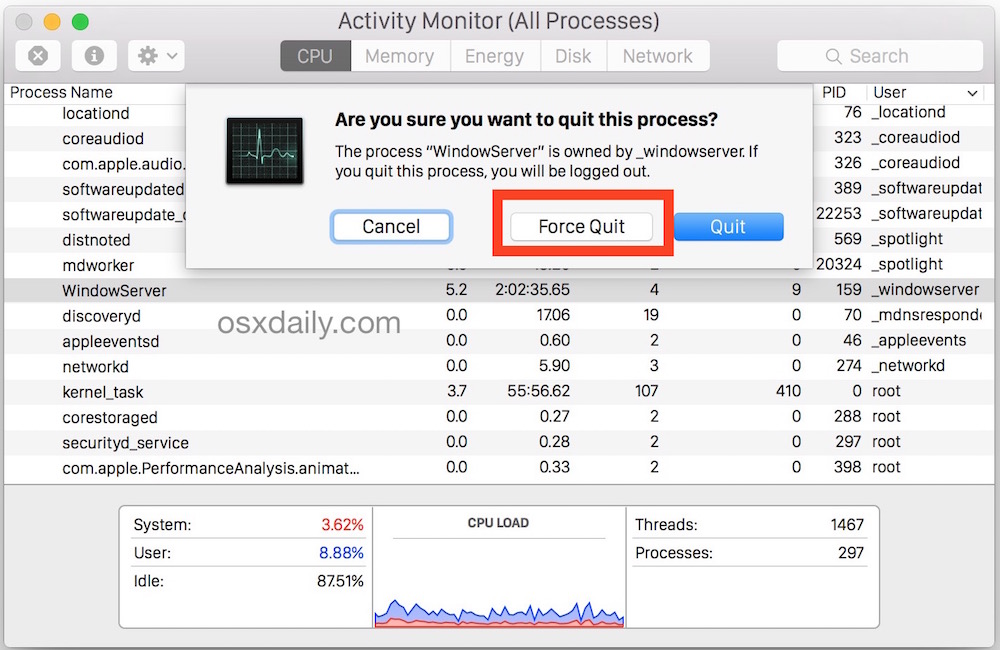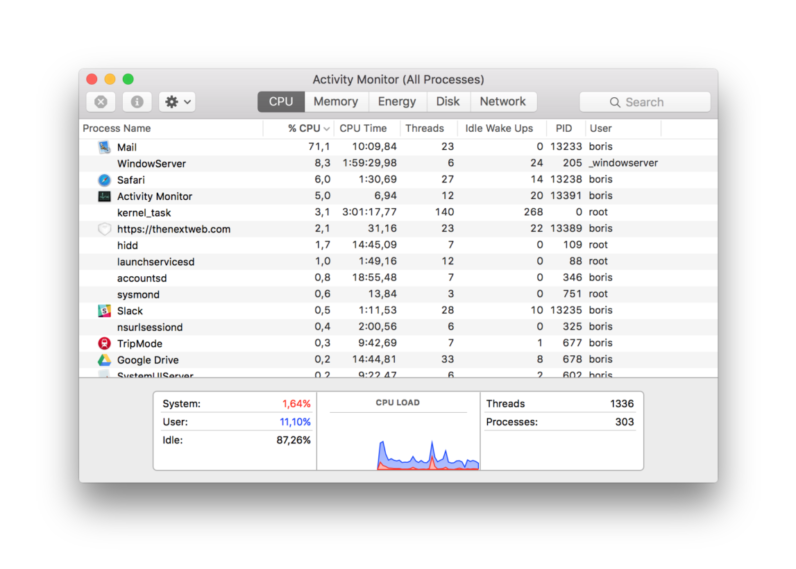
- #Activity monitor mac os how to#
- #Activity monitor mac os mac os#
- #Activity monitor mac os update#
- #Activity monitor mac os software#
#Activity monitor mac os software#
Adding this software to the Exception List will affect user’s Mac security. However, there is a possibility for some malware to tamper with MRT.app. Most Antivirus solution is to add it to the Exception List. You will see the popup warning that MRT.app is detected as malicious. Its updates affects other antivirus updates so some third-party antivirus software, which also contains the signature, mistakenly recognize MRT.app as malware. The content includes signatures of new malware.
#Activity monitor mac os update#
Despite taking the form of an application bundle, MRT is not supposed to be launched by users.Īpple will update MRT.app from time to time, with the latest updates. The Malware Removal Tool (MRT.app) is an application that lives in the CoreServices folder located in /System/Library, rather than the Applications or Utilities folders where user level programs are typically located. There will be several tabs for CPU, Memory, Disk activity and Disk Usage, click on any one of them to view more detailed information about the same.Know what to do when the MRT.app tool on your Mac uses high CPU usage.

You also get system information about your Mac. Viewing System Stats in the Activity MonitorĪt the bottom of the Activity monitor, you should get live system stats updated in real-time.

If the app has become unresponsive, you can instead use the “ Force Quit” option to terminate the process immediately and the app seizes to run. This should bring up a process confirming if you really want to terminate the process or cancel the termination, select the quit option to terminate the process. Killing a process from the Activity Monitorįrom the activity monitor just click on the application or the process that you wish to terminate and click on the large red quit process button in the left corner of the app windows. For that matter, if there is any process running on the Mac, it will show up here and can be modified or suspended right from the activity monitor. This is a very useful and powerful tool as it does not just show applications being run in the current user, it also displays system-level tasks, kernel tasks, daemons, processes being run even on another user of the operating system. There is also a search box to search for a specific process if you know the process name. In the activity monitor, you can sort the list based on the CPU usage, Memory usage, name or the process ID. Selecting it should open up the Activity Monitor where you can view, manage and modify the tasks. Start off by hitting the Command+Spacebar combination to bring up the Spotlight search field and key in “Activity Monitor”. Then hit the Return key when “Activity Monitor” shows up in the spotlight results. You can alternatively just use the Spotlight for quick keyboard access.Īctivity Monitor is located in your /Applications/Utilities/ folder and the best way to access it is probably via the Spotlight as a keyboard shortcut.
#Activity monitor mac os mac os#
If you’re coming from Windows, you should be well acquainted with the three finger salute(Ctrl+Alt+Del) which is used to launch the Windows Task Manager, however, in Mac OS X, it’s a bit different, you can launch the app from within its directory, through the LaunchPad, or just drag it into the Dock for future quick access.

So here is a procedural guide on the launching and using the Activity Monitor.
#Activity monitor mac os how to#
This resulted in an instant boost in the performance of the Mac, Although extremely simple, most people don’t even know about the existence of the Activity Monitor let alone how to use it.

It wasn’t difficult to just fire up the Activity Monitor and find the app which is using too much of the system resources and just terminate the process. My colleague was startled and started looking for the task manager but couldn’t find one and instantly approached me for help as I’d been a Mac user for long. He had installed a few apps on the Mac for reviewing it and unfortunately, one of the installed apps started misbehaving and started crashing which resulted in the system going haywire. We’d purchased a new Mac at our workplace and one of my colleagues had come from using Windows systems all his life and had never used a Mac before. If you’re unfamiliar with the Activity monitor or the task management process of Mac in general, don’t worry, although this is a very powerful application with a lot of utility value, it is still very simple to use. However in the Mac OS, the task manager comes with a different name, in the Mac OS, it is called the Activity monitor. It is a fairly useful tool which can be used to check the view, manage and end tasks and activity processes that are going on in the Mac OS. If you’re a new Mac OS user coming right from windows, you must have heard of the Windows task manager before.


 0 kommentar(er)
0 kommentar(er)
